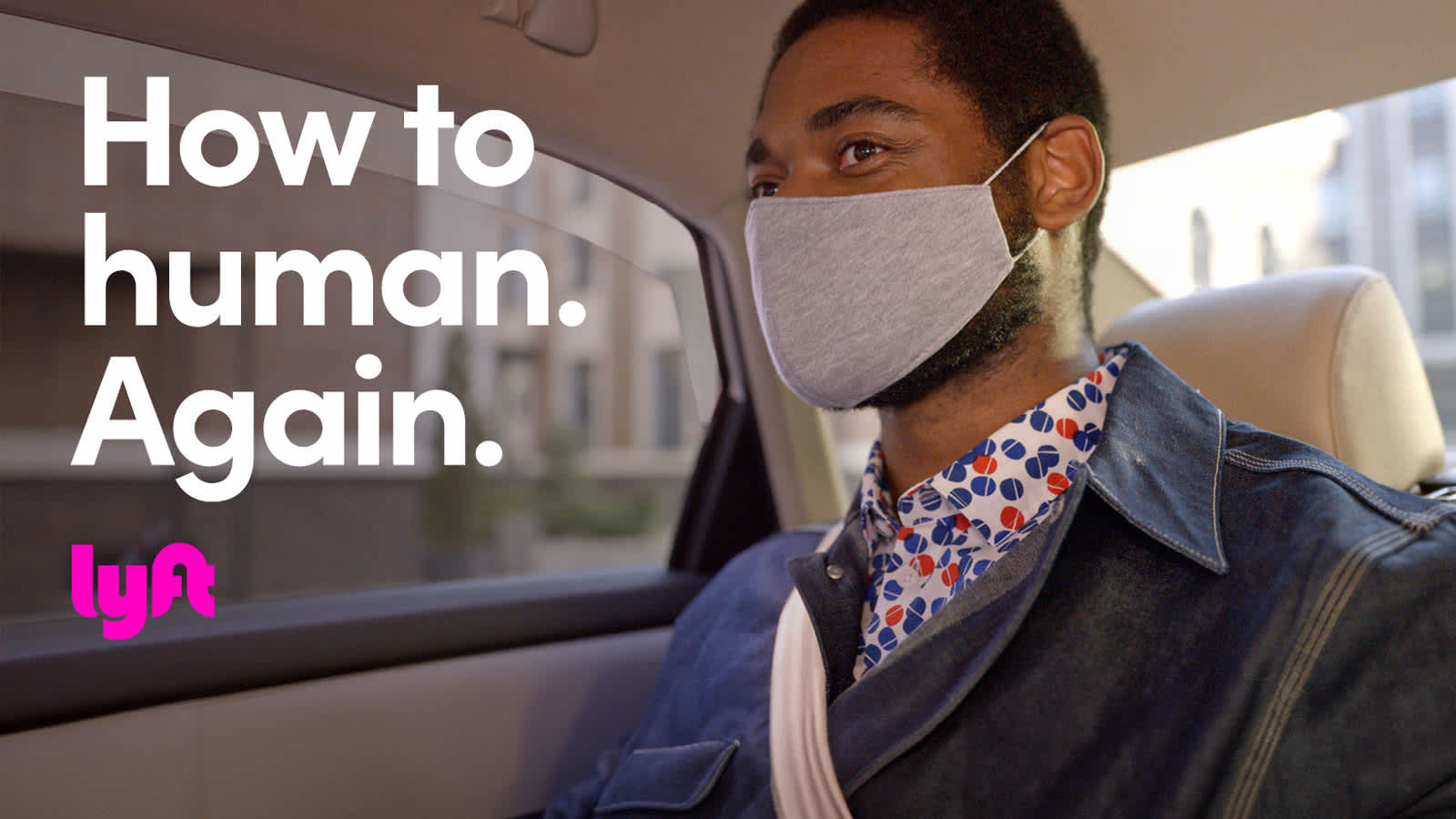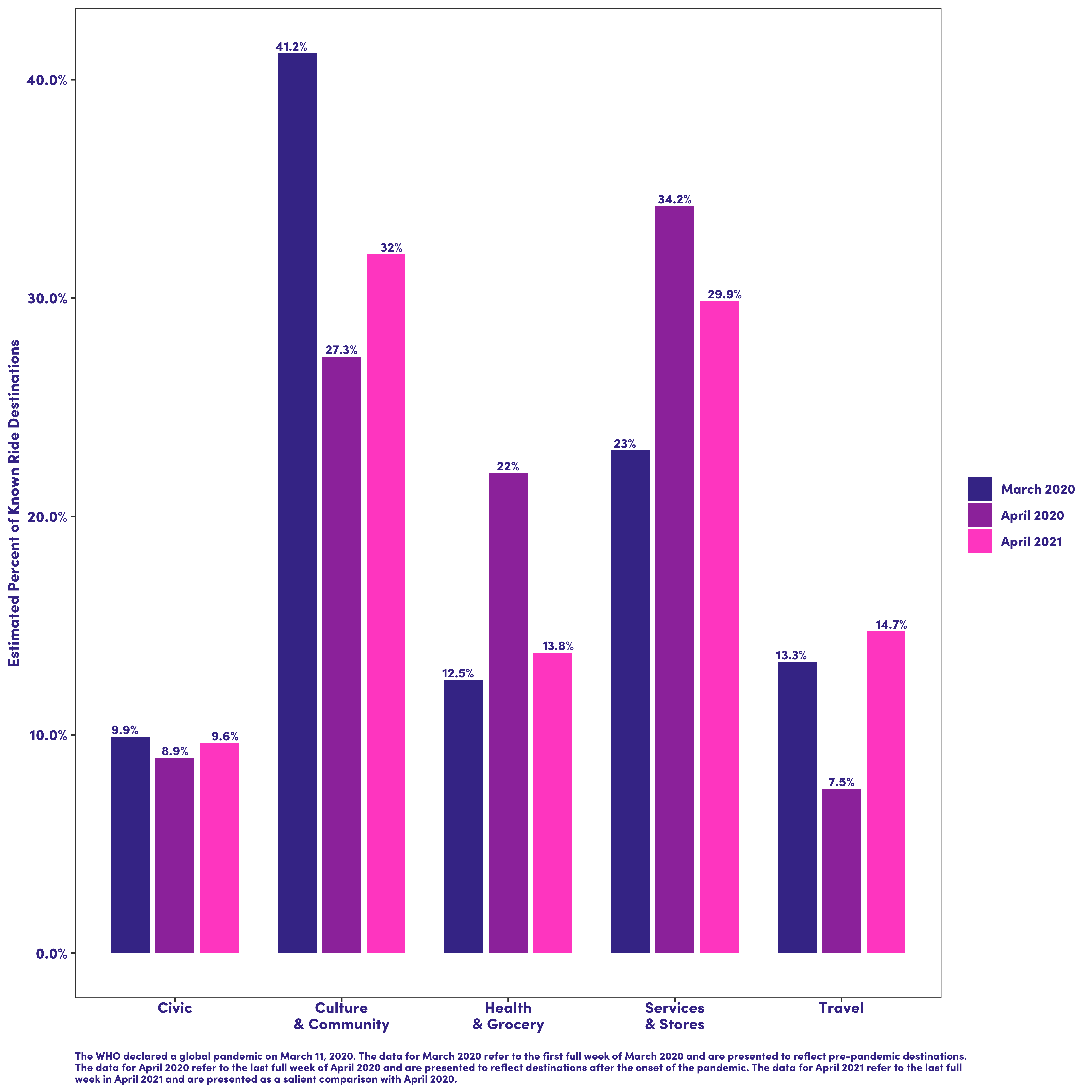
COVID-19 vaccination rates continue to climb across much of the U.S., bringing renewed hope of social and economic recovery. As Lyft works with the Biden administration to provide access to free and discounted rides to vaccination sites and CDC guidelines shift to accommodate those fully vaccinated, we’re seeing people across the country start to get back out into their communities. Lyft users are reacquainting themselves with the app, once again opting for rideshare and other mobility options, including bikes and scooters, as a convenient and reliable way of getting where they need to go.
We pulled data to better understand how Lyft users' destinations have changed from before the pandemic and during the pandemic, and as we begin to recover one thing is clear: Spring 2021 is looking and feeling a lot different from Spring 2020. People are moving again with Lyft — according to Lyft data, the share* of travel rides (e.g., rides with travel-related destinations, such as airports, lodging, trains, inter-city bus stations, or similar) is significantly higher than last year.

People are learning how to human again and are looking for ways to get back into their communities, and we see this trend come to life in our ride data. While not back to pre-pandemic levels, the share* of community & culture rides (e.g., rides whose destinations are bars, restaurants, gyms, or similar) are up, with stadiums seeing a more than 500% increase as a share* of rides in the last full week of April 2021 over the same week in 2020. And tourist attraction, gym, entertainment, & bar destinations are up 200% or more as a share* of rides over the same week in April 2020, a clear sign that people are starting to get back into communities across the U.S.
Civic destinations, like schools, universities, and libraries, are also recovering, with the share* of Lyft rides to libraries increasing more than 50% over April 2020.
Early data also show that some categories are approaching their pre-pandemic shares. The share of trips to tourist attractions and food, for instance, are nearing their pre-pandemic share.*
Over the last year, people have turned to Lyft for essential trips. According to Lyft's 2021 Economic Impact Report, 48% of riders reported that it would have been difficult or even impossible for them to access essential services without the availability of Lyft and other ridesharing services. While the share* of rides to health & grocery destinations is returning to pre-pandemic levels, those rides were more critical than ever throughout this last year. 29% of riders who have used the Lyft platform to access healthcare services say they would be less likely to make it to their healthcare-related appointments if they did not have access to Lyft or other ridesharing services, and 37% of riders have used Lyft to get around when public transit did not operate.
Throughout the pandemic, we have been adapting our rideshare experience to protect riders and drivers with our Health Safety Program, which includes a continued mask mandate Air Care Guide. So whenever you’re ready to get back out there, Lyft is here to help you reconnect with the people and places you love.
*Share of known ride destinations. Unknown ride destinations are not counted in the numerator or denominator.
Forward-Looking Statements
Certain statements contained in this announcement are “forward-looking statements” within the meaning of the securities laws, including statements about Lyft’s business and operating performance. Such statements, which are not of historical fact, involve estimates, assumptions, judgments and uncertainties. There are a number of factors that could cause actual results or outcomes to differ materially from those addressed in the forward-looking statements. Such factors are detailed in Lyft’s filings with the Securities and Exchange Commission. We do not undertake an obligation to update our forward-looking statements to reflect future events, except as required by applicable law.